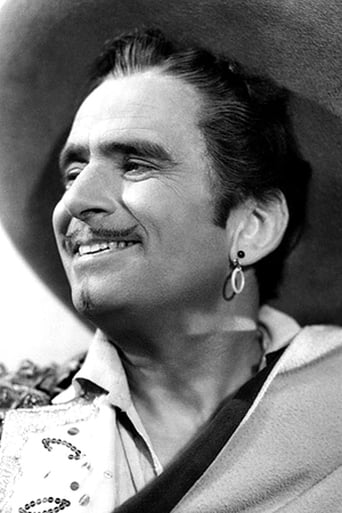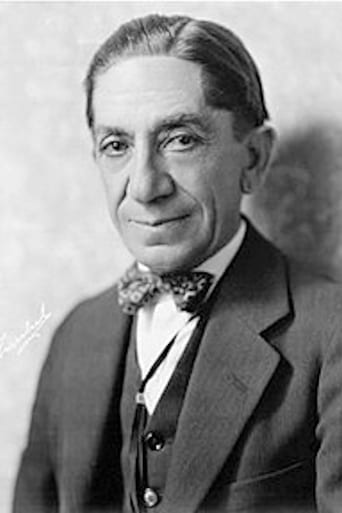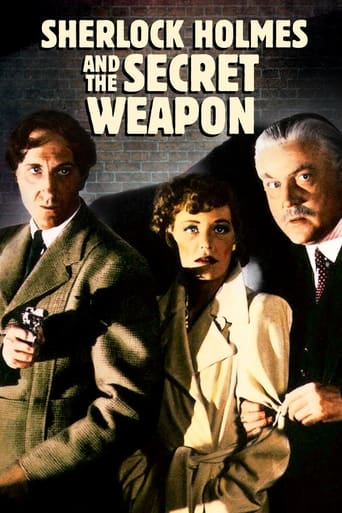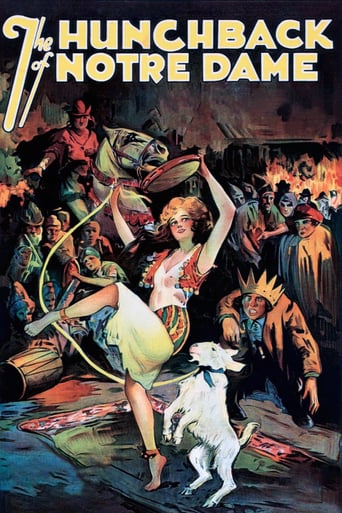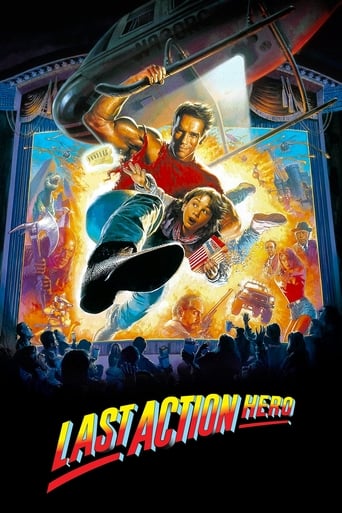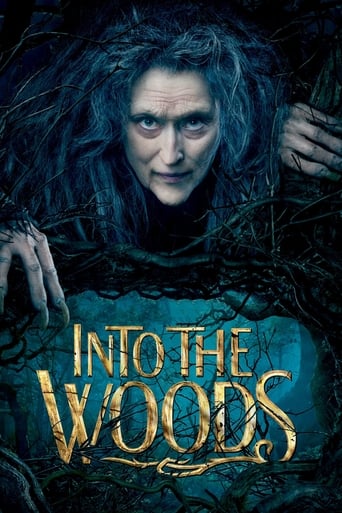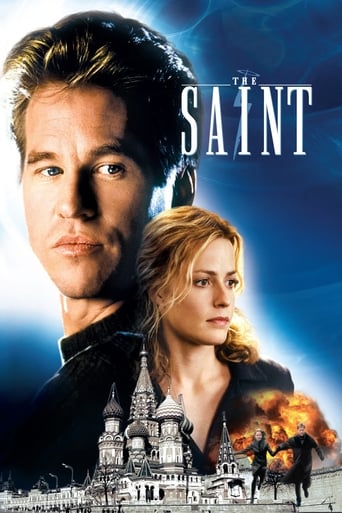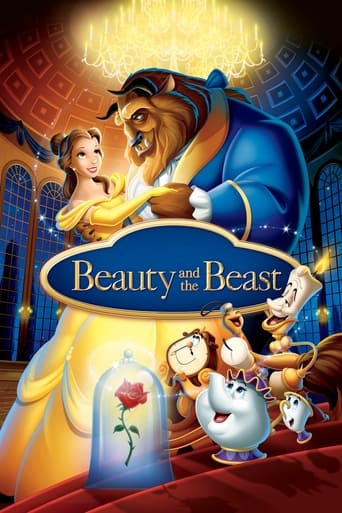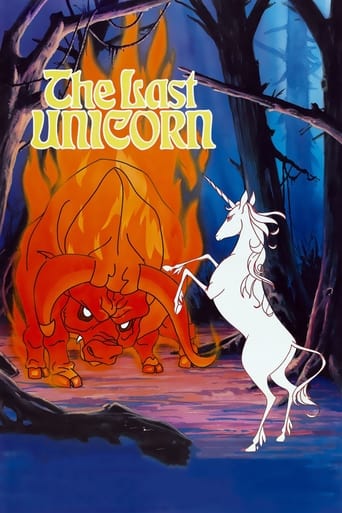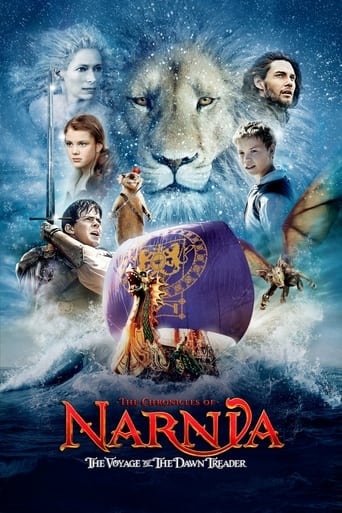
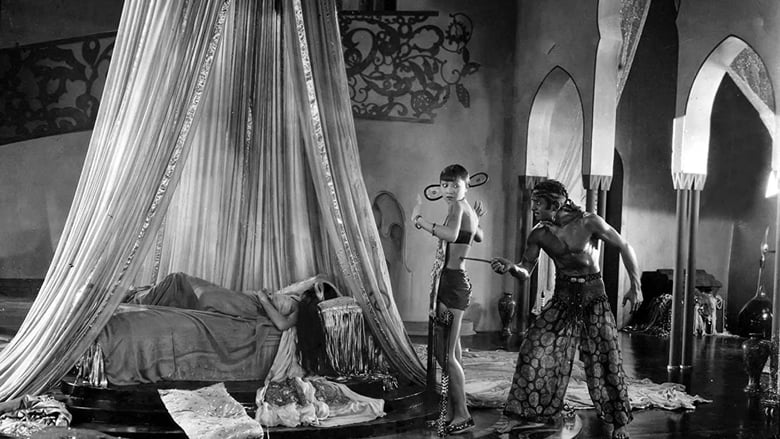
The Thief of Bagdad (1924)
A recalcitrant thief vies with a duplicitous Mongol ruler for the hand of a beautiful princess.
Watch Trailer
Cast


Similar titles
Reviews
Having made his name primarily in the comedy genre, silent superstar Douglas Fairbanks continued his transformation into swashbuckler with this lavish fantasy epic. Made on grand sets that rivalled the likes of Cabiria (1914), thanks to some spectacular set design by William Cameron Menzies, and featuring some ground-breaking visual effects, the real attraction of The Thief of Bagdad is Fairbanks himself, who compensates for some quite outlandish over-acting with an irresistibly athletic performance. The 1940 remake (for which Menzies was once of a few uncredited directors) cast Sabu as the titular thief, but relegated him to the sidekick of John Justin's Prince Ahmad. Perhaps the makers felt that making a petty thief the hero was a little more than the audience could accept, and so this works as a testament to the effortless likability of Fairbanks.The Thief (Fairbanks) roams Bagdad, taking what he pleases and going wherever his legs will take him. Unmoved by religion, he seeks any opportunity to steal, telling a holy man "What I want, I take!". Seeking the ultimate treasure, he and his associate (Snitz Edwards) break into the palace of the Caliph (Brandon Hurst), where he discovers the Caliph's beautiful daughter (Julanne Johnston) laying asleep. Yet when the guards are alerted, the Thief flees. With the Princess' birthday the next day, Bagdad awaits the mighty rulers and Prince's of other kingdom who will pay tribute to the Princess in the hope of winning her heart. The Thief plans on stealing her, yet when a twist of fate causes the Princess to love him back, he must embark on a mighty quest to bring her the rarest gift he can find, in the hope of winning the favour of her father.With a hefty running time of 150 minutes, The Thief of Bagdad naturally suffers from some lengthy un-eventful periods, occasionally shifting its focus to the plans of the Mongol Prince (Sojin) to win the Princess by force and take over the city of Bagdad. But this is fantasy in its purest form, with magic ropes and carpets, various giant monsters, and a winged horse, all giving the opportunity for some dazzling and charming special effects that prove to be quite spectacular retrospectively. The film is an absolute visual delight, with the grand sets simply blowing my mind in an age of lazy CGI work. But like I said before, the true star is Fairbanks, failing to convince as an Arab but giving a performance of wonderful athleticism that pose no question as to why he was an absolute superstar in his day. The 1940 remake is certainly better remembered, especially for its glorious Technicolour cinematography, but Raoul Walsh's 1924 effort is simply beautiful, with some genuinely thrilling moments during it's climatic final third.www.the-wrath-of-blog.blogspot.com
While the 1940 The Thief of Bagdad is one of my favourite films, this silent film from 1924 is every bit as memorable and has much to offer. Visually, it is spectacular especially in the splendid cinematography and the colourful sets. The story is still as magical as ever, with the action witty and cleverly choreographed with Fairbanks doing his own stunts and doing it so energetically, and the fantasy elements from the magic rope and the winged horse to the underwater sea monsters and the valley battle are enough to enchant you. True, the film is lengthy and may contain a couple of lulls in the pacing, but when Fairbanks, the visuals and the adventure and fantasy elements of the story were so good, this was hardly a problem for me. The characters could be seen as genre clichés, but fun and likable ones at that as well as endearingly performed. Of the performances, faring weakest was Julanne Johnston, beautiful but on the bland side. The rest of the cast more than make amends, with Douglas Faribanks really the epitome of dashing, heroic and charming(made even more so with his trademark smile), Sojin deliciously malevolent and Anna May Wong entrancing. Overall, there are a couple of debits, but the great things overshadow those completely and make for a sensational film. 9.5/10 Bethany Cox
I happened to see The Thief Of Bagdad on a VHS that had a narration by Douglas Fairbanks, Jr. He said that of all the films that his father did this was the junior Fairbanks's favorite. Although the senior Fairbanks in closeups might have looked a little long in the tooth to be playing the young thief who wooed and won a princess, he hadn't lost a bit of athleticism that his films were known for.The Tales of the Arabian Nights was the inspiration for this The Thief Of Bagdad and the more familiar sound version that Alexander Korda produced and shot here in the USA as well due to wartime conditions in Great Britain. Here Douglas Fairbanks essentially plays both parts of the two heroes that Sabu and John Justin play in the Korda version. Fairbanks is the professional thief who can steal just about anything, big or small. When he steals a magic rope and climbs into the Caliph's Palace and beholds the sight of the princess Julanne Johnston, there will be no other woman for him.But the Bagdad Caliphate is not an upwardly mobile society, not for the poor, but honest and not for a criminal. Still he tries to pass himself off as a prince and he's in competition with three other princes for her hand.One of them, Japanese actor Rojin is the Mongol prince and if he can't woo the Caliphate in alliance, he'll steal the kingdom with his army which he starts infiltrating in Bagdad. Fairbanks ultimately can't go through with the deception though he charms the princess. She sneaks him out of the palace before what happens to upwardly mobile aspirants in that society happens to Fairbanks.But holy man Charles Belcher says that Fairbanks has a future with the princess and he's put through a lot of tests before he can wed. And of course in typical bravura Fairbanks style, he puts the Mongols to flight with an army created out of nowhere.By this time Fairbanks, Mary Pickford, Charlie Chaplin, and D.W. Griffith had gotten United Artists up and running as the production company for their films which it was primarily doing in those early days. Producer Fairbanks spared no expense in creating the sets for The Thief Of Bagdad, the sets look like something Cecil B. DeMille or D.W. Griffith might have done. I wouldn't be surprised if Griffith took an unofficial hand here.The sets were created of course by young William Cameron Menzies in one of his earliest films, costumes by Mitchell Leisen, and the director was Raoul Walsh, all of them getting big boosts in their careers from Douglas Fairbanks. With all that legendary talent in its salad days no wonder The Thief Of Bagdad holds up as well as it does today.I also must comment on the orchestrations of themes of Rimsky-Korsakov by the London Symphony Orchestra. Theater organs are usually good for silent films, but this one really calls for an orchestra so vast is the sweep of this silent classic.At two and half hours plus, The Thief Of Bagdad runs longer than most silent films did by far. Still even today it casts a spell over the viewer.
It's a funny thing about watching silent movies in the 21st Century, even silent movies that have been well restored. Especially in the case of fantasy films like "The Thief of Baghdad" and others like it that require special effects, it is not just that the special effects look archaic compared to the CGI effects of today. There are a lot of things modern day audiences have to get used to, such as the fact that spoken dialogue doesn't appear in subtitles unless it absolutely has to. If two people are arguing and no words appear on the screen, you really have to make your best guess as to what they could be saying.There's also the case of timing. "The Thief of Baghdad" runs 2 hours and 19 minutes, and it's safe to say that if the film had sound (dialogue too), the running time would probably be cut down by at least 20 minutes. There are also the other hang-ups of silent movies, such as the movement of the characters being too quick, and how some of the actors and actresses look very strange and out of the ordinary. The lack of color added to the overall darkness of the film due to lack of lighting also is a deterrent to watching these very, very old films that were made when my grandparents were infants (literally).If you are not a fan of old movies, you really have to keep those things in mind when watching "The Thief of Baghdad" for the first time. The fact is that this film's audience was probably people who didn't go to the movies often, and were still amazed by the novelty of moving pictures.Keeping in mind all I said about why most silent films have not exactly stood the test of time, is "The Thief of Baghdad" a good movie? For many reasons, yes, and it should be watched by people who are fans of action and fantasy movies, because this really paved the way for what CGI and other special effects sciences only made better in the years to come.The movie tells a good story, although one that sputters and stalls a few times in the first 30 minutes. Douglas Fairbanks, the epitome of the ultra masculine hero, plays the thief here who goes by no other name. You see him steal to make a living in many clever ways. In fact, the first five minutes of the film are incredibly entertaining the way he manages to pickpocket wealthy patrons, and effortlessly fling his way up to a balcony with just a long rope and a donkey.The story really begins, though, when the thief disguises himself as a prince, and attempts to woo the princess. He does successfully, though he is filled with guilt about deceiving her. Long story short, he is put on a quest to obtain a rare gift for the princess, in competition with three other princes with whom the princess wants no company. Whereas the three actual princes rely on their servants to get them their gifts, the thief goes alone on a long journey. He has help along the way as to where to go, but he really does the grunt work himself.Of course, the filmmakers did nothing to make Fairbanks look Arabian or Iraqi, but that's just one of the ways you really have to suspend disbelief in this film. Fortunately, "The Thief of Baghdad" didn't make the same mistake that "Birth of a Nation" did in portraying racist stereotypes (whether or not that was a mistake really depends on the viewer). Instead of making white men and women into embarrassing stereotypes, this film used actual actors of Asian, African, and (I'm guessing) middle Eastern descent. They probably had the artistic liberty to make such politically incorrect assertions about those in the Middle East, but they thankfully avoided it in this film.Being a moviegoer who you could say has been spoiled by CGI special effects, I actually found myself wondering how some of the special effects in this movie were pulled off. There are scenes where a boy mysteriously reappears on a rope that is hanging in mid air, a giant scorpion attacks the thief as he searches for the lost treasure, and a magic carpet flies over the city of Baghdad. I was amazed to find myself saying, "Given what the filmmakers had to work with, how did they do that? How did they edit the film so that that particular effect worked?" If you have that sort of wonderment out of a moviegoer who just went to see "Avatar", you've got a good movie.The movie was also probably shot on a studio lot, but the set design is so detailed with its tall buildings and plants carefully placed in the makeshift Baghdad that there are few indications of such a location. The movie was probably a big hit at its time because so much artistic effort was put into bringing this Arabian Knights tale to life. These scenes within Baghdad made me wish more that the film was in color, but I would not settle for colorization. That process would have ruined the film.So "The Thief of Baghdad" is a bit slow at times, and some scenes require the point of view of someone who has never heard of television. Still, the movie told a good story, the special effects were awe-inspiring considering its time period, and the message of the film is something to take away: "Happiness Must Be Earned". These words are written in the sky as an old man is sitting in the Arabian desert presumably telling a young boy this story. This scene, identical in the beginning and end of the movie, go against the traditional rule of "Show, don't tell", but the scene is still a very artistic and beautiful way to bookmark such a film.


